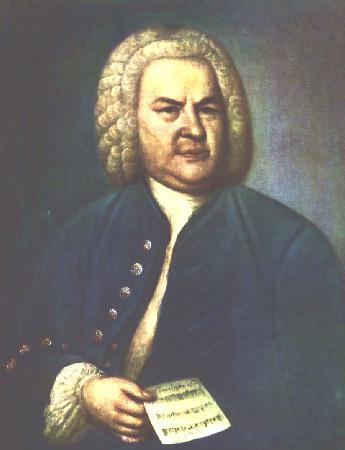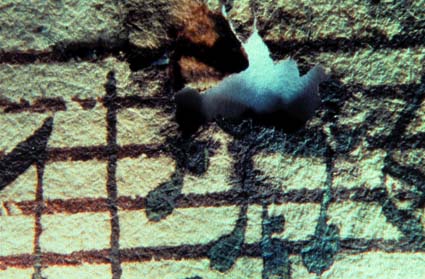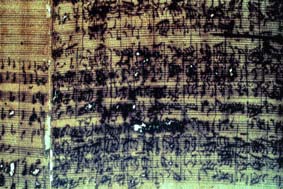|
Preserving Bach: Bach's Original
Manuscripts |
 Johann Sebastian Bach Portrait by Hausmann, 1746 |
The above portrait of Bach shows him holding one of his original manuscripts. As Bernd Müller, Editor for Physics and New Media of the German periodical Bild der Wissenschaft reports in his article of the latest issue of this periodical, nearly 8,000 original sheets of Bach's music that are stored in the Berlin State Library, are in serious danger: the ink Bach used is virtually eating the paper up!
 Detailed excerpt from a manusript page of the Bach Cantata BWV 79 "Gott der Herr ist Sonn und Schild", featured in "Bild der Wissenschaft" |
As the writer points out, about one fourth of all of Bach's original manuscripts are already severely damaged, such as the score depicted here and mentions that there, where the ink has already eaten holes into the paper such as the one above, any help is too late, while colored paper sections can very likely be saved by means of paper splitting.
 Excerpt from a manusript page of the Bach Cantata BWV 79 "Gott der Herr ist Sonn und Schild", featured in "Bild der Wissenschaft" |
How can this be done? As Müller reports, the restoration specialists split the layers of the endangered sheets in the middle, a thin sheet of paper is inserted in-between, and the three new layers are glued together, again, in an elaborate process.
While the restoration experts involved in this process (such as Dr. Antonius Jammers, General Manager of the Berlin State Library), so Müller, are fairly certain that it will help preserve Bach's invaluable original scores, other experts raise objections against it, as does Robert Fuchs who warns that the originals might be destroyed.
The Berlin State Library experts point out that after the completion of the restoration process, musicologists will be able to return to work with these originals as usual: water marks for the dating of Bach's manuscripts will remain visible. Moreover, Bach's composition method, such as the sequence of inks used in his corrections, can also be observed again, while the existing microfiche copies and their black-and-white representation do not facilitate this.